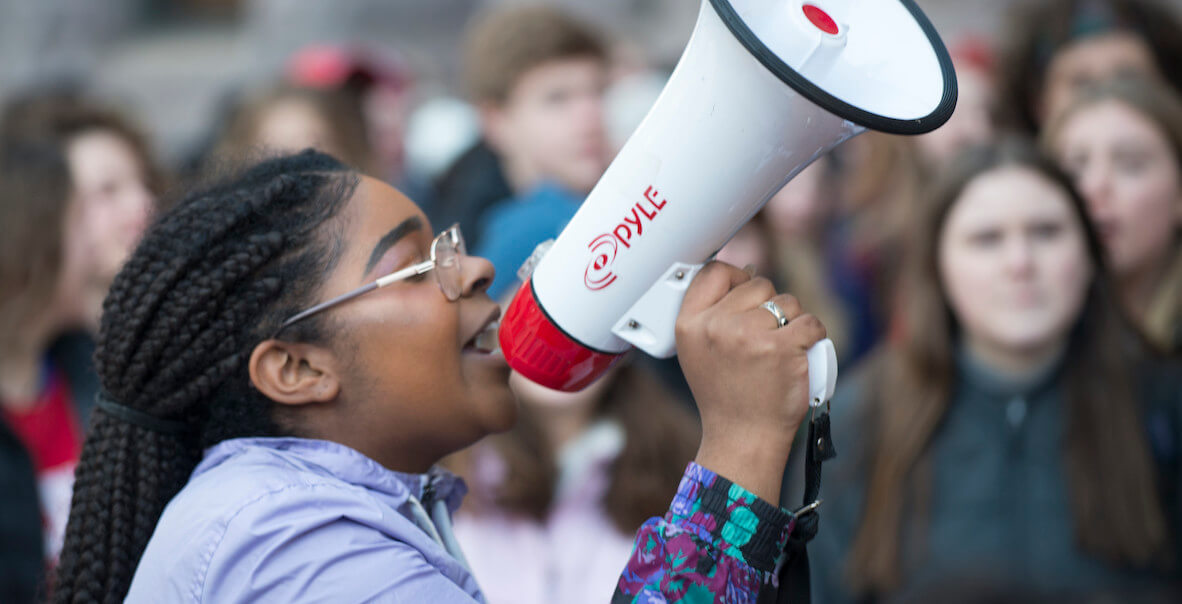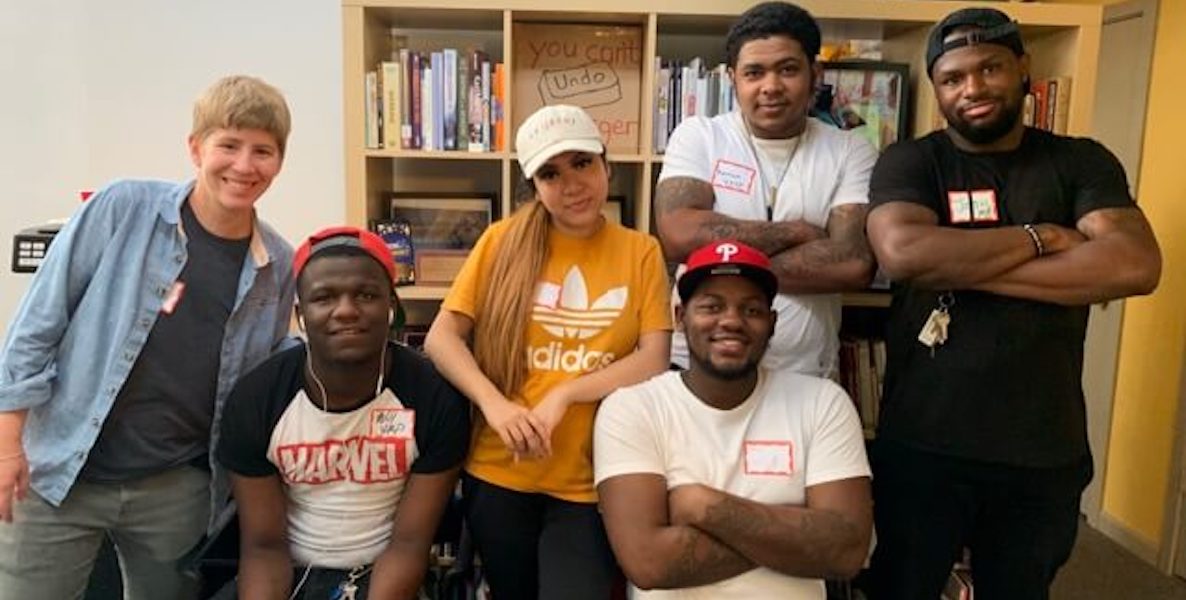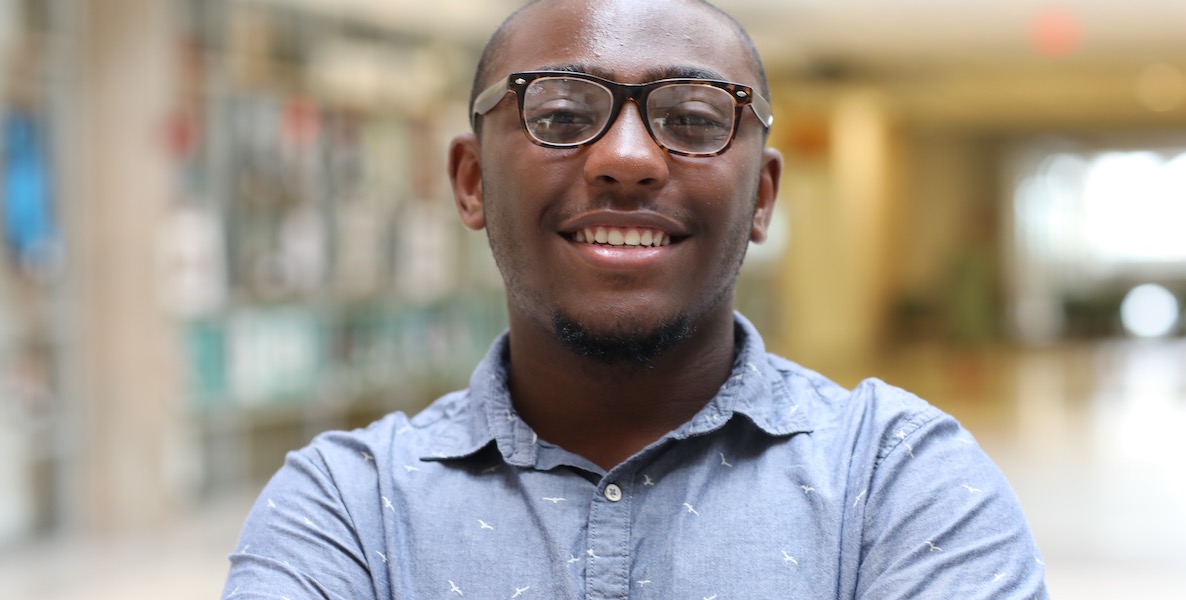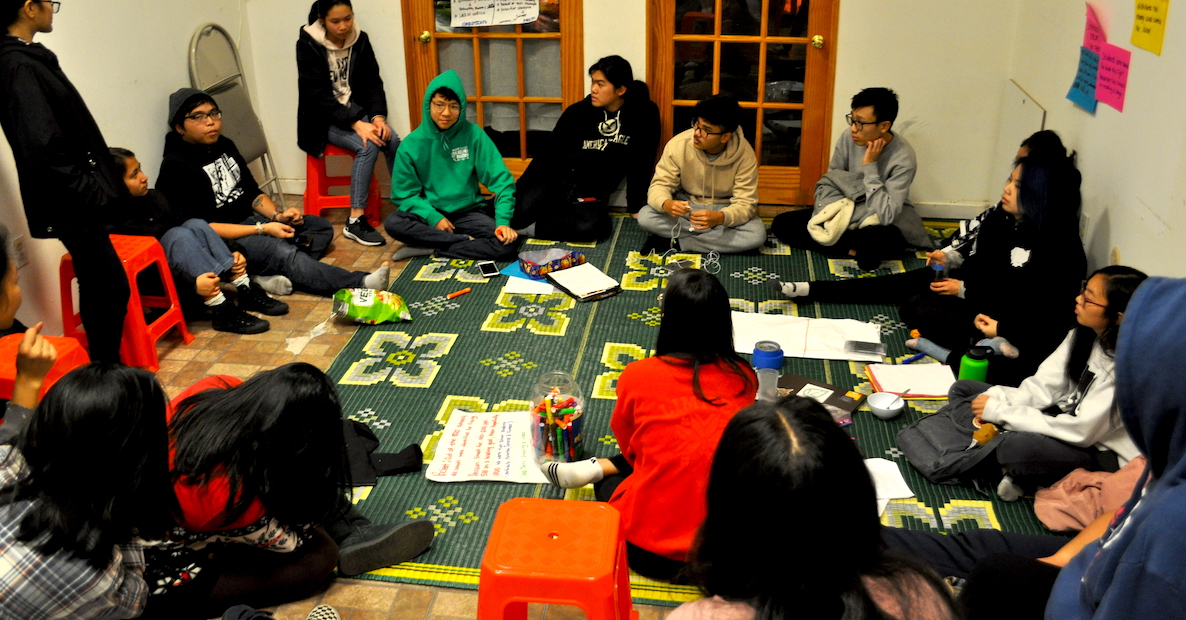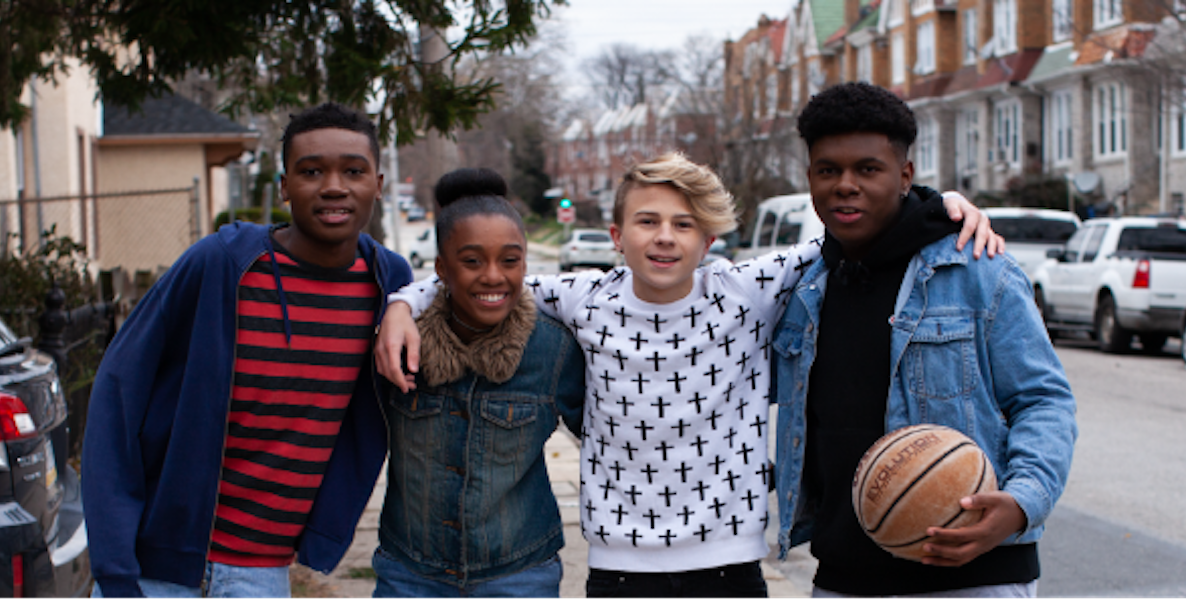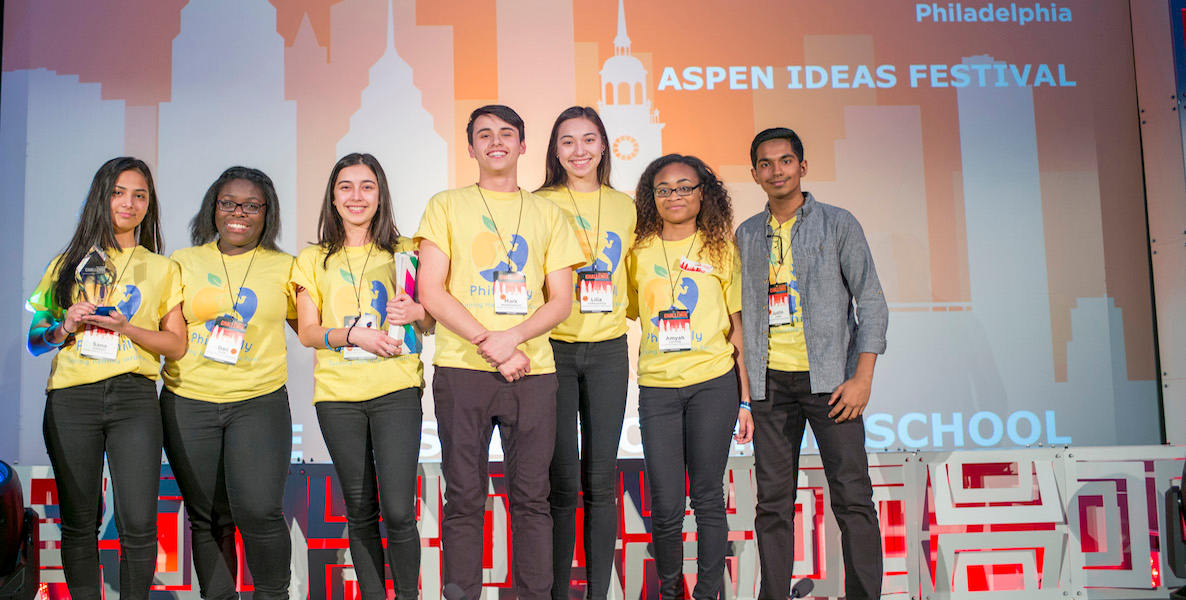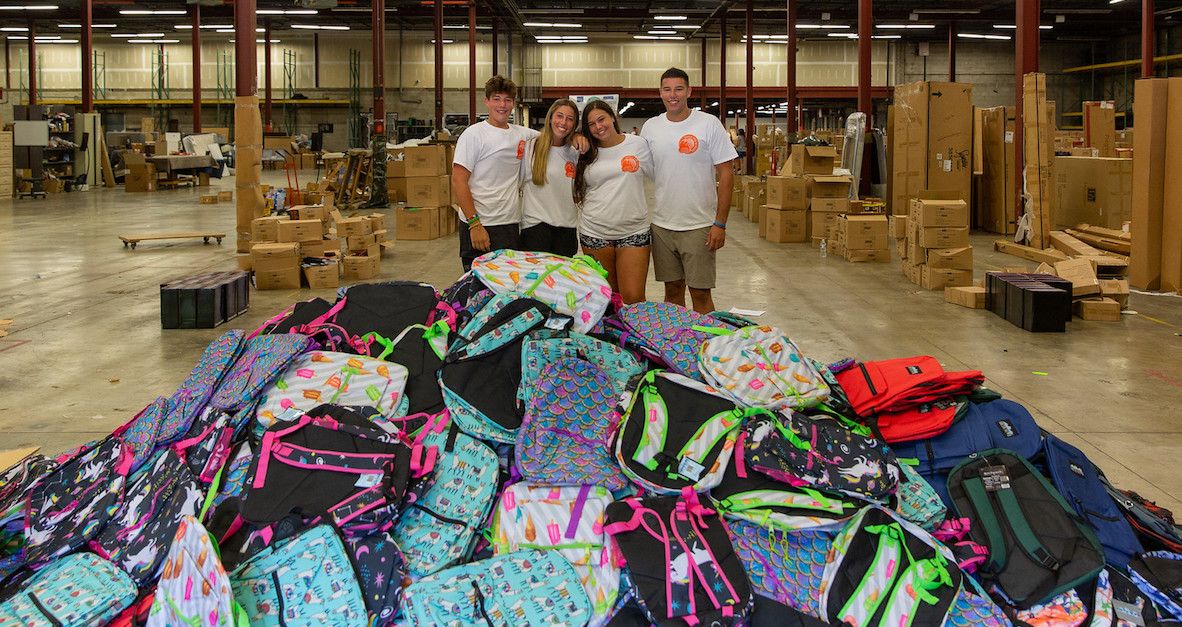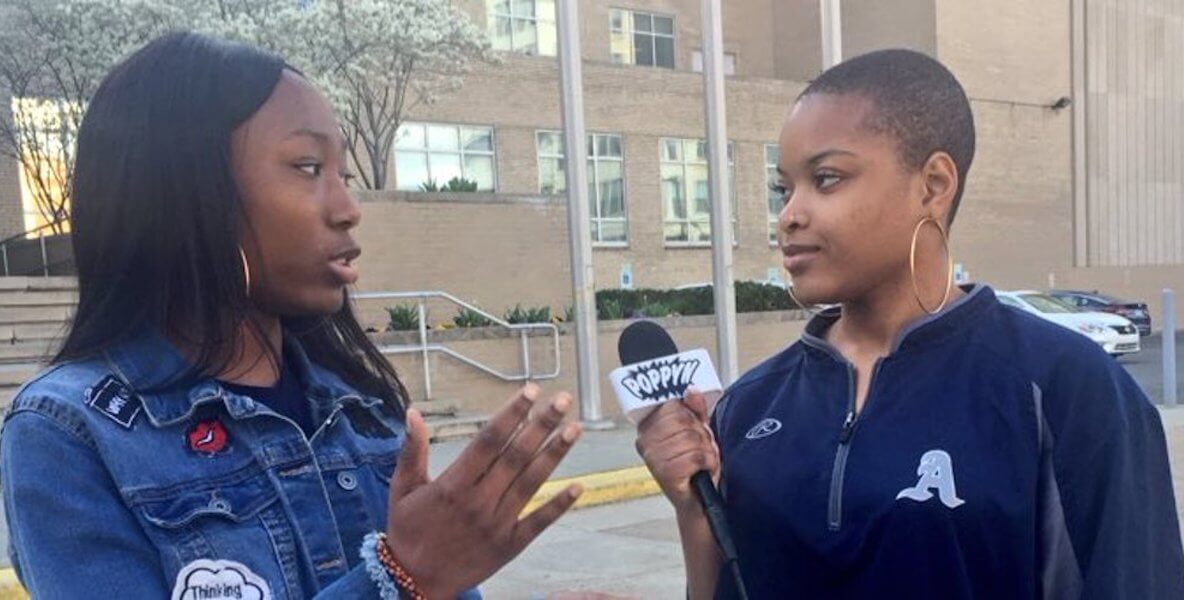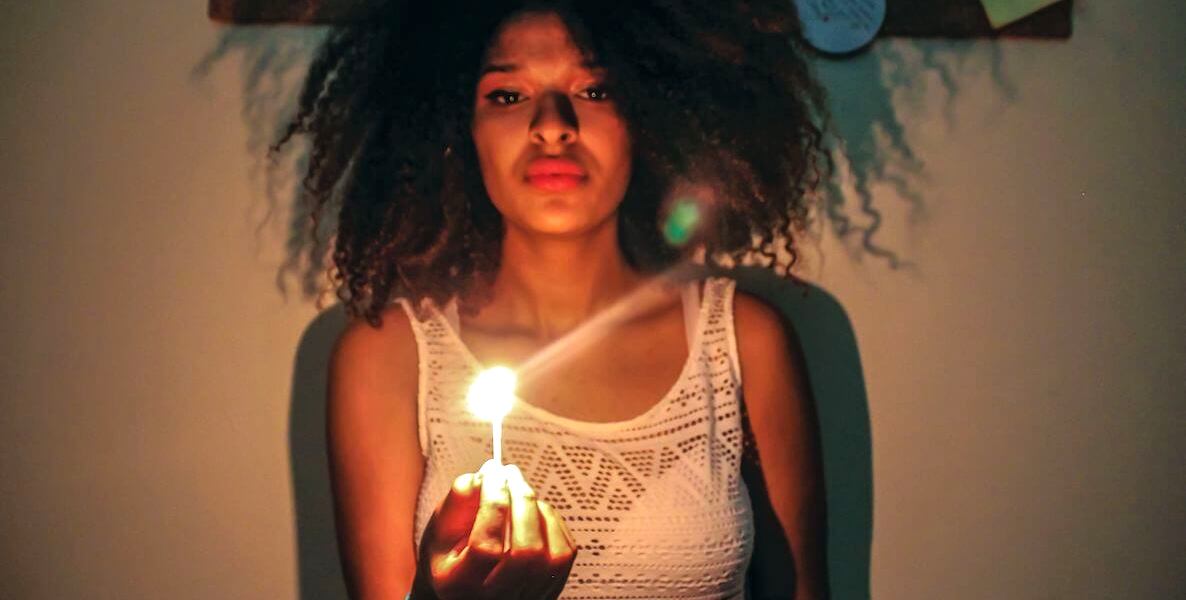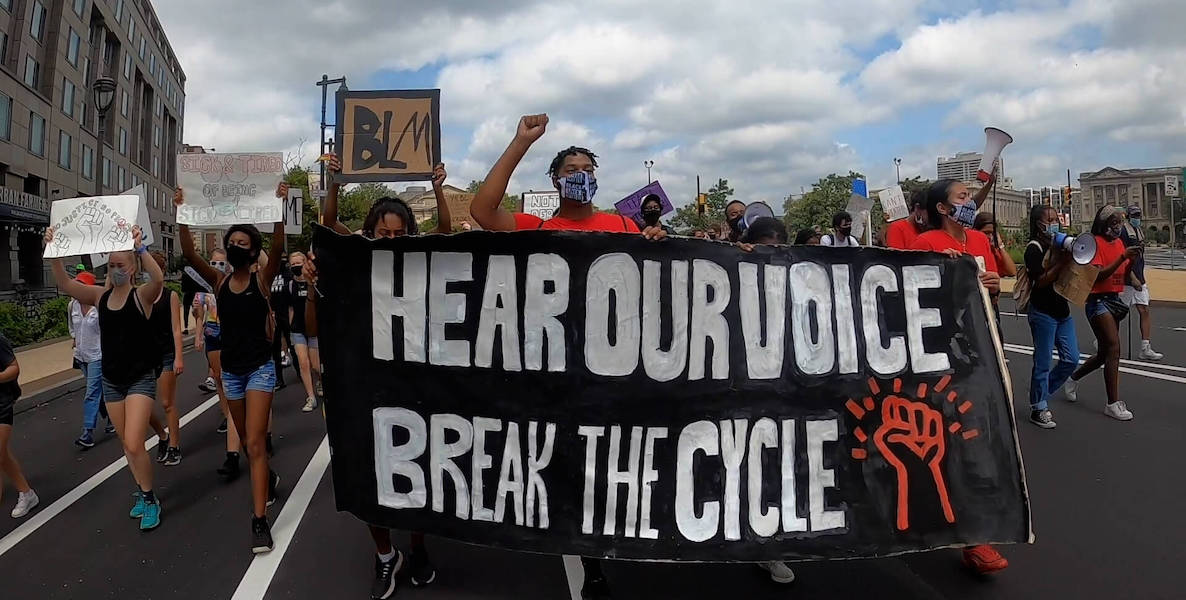Remember when Philly teens made national news about 10 years ago?
“Flash Mob’ Of Youth Vandals Puts Philly On Alert” (NPR)
“New curfew for Philly teens as mayor blasts flash mobs” (LA Times)
“New Video Surfaces Showing Unprovoked Attack by Philadelphia Teens” (Fox News)
So-called “flash mobs” of teenagers were coordinating meetups in locations throughout the city through social media; some stole from stores, vandalized buildings, pick-pocketed and assaulted passersby. Jim Kenney, at-large councilmember at the time, dubbed it “urban terrorism.”
Most Philly teens’ response? That’s not us.
Member of Students VOICES, an after-school program of The Collaborative at Temple University that supports young people in becoming change agents and social justice advocates, were particularly frustrated. They wondered, Where are the camera crews when we’re out organizing a food drive? Or mentoring younger students? Or excelling in the arts?
So they decided to put together their own camera crews to capture and share those moments and launched POPPYN—Presenting Our Perspectives on Philly Youth News.
“It felt so empowering to think about how we can counter mainstream narratives that don’t really tell the full story of ourselves—of Black youth, specifically, and oftentimes low-income Black youth.”
Each year, a dozen or so students from (mostly public) high schools across the city participate in the after-school program, led by college “media educators” (mostly Temple students), who facilitate meetings and help coordinate the work that goes into putting together an episode.
![]() Though they started out focused on spotlighting positive stories of young Philadelphians, within the first year they broadened coverage to include a range of issues relevant to youth. They’ve covered youth programs like Rebel Ventures, T.U.F.F. Girls, and Youth United for Change. In their “Breakin’ it Down” series, they’ve delved into consent; voter suppression; and teens and social media. Full episodes include deep dives into environmental justice; gentrification; and the foster care system.
Though they started out focused on spotlighting positive stories of young Philadelphians, within the first year they broadened coverage to include a range of issues relevant to youth. They’ve covered youth programs like Rebel Ventures, T.U.F.F. Girls, and Youth United for Change. In their “Breakin’ it Down” series, they’ve delved into consent; voter suppression; and teens and social media. Full episodes include deep dives into environmental justice; gentrification; and the foster care system.
“We still find that balance between bringing joy to the table and highlighting these very real issues that are ongoing in our communities,” says POPPYN program manager and University Community Collaborative media and communications coordinator Stormy Kelsey, a Temple graduate student.
Since 2010, POPPYN has produced more than 200 videos—all of them informative and dynamic, rich with original footage and interviews with young people, experts, and everyday Philadelphians. In normal times, they host community screenings for the release of each show, which also air every Thursday at 5:30pm on Philadelphia’s Public Access Channel (Comcast 66/Verizon 29).
Through the program, students gain research, reporting and production skills, while coming to better understand real world issues. With support and mentoring, they learn to put their lives into context, and then share what they’ve learned—to educate and motivate both their peers and adults.
“I think our program gives a lot of students the language to describe things they experience,” says POPPYN college facilitator Camille Porter, “and gives them the tools to advocate for other people.”
POPPYN widens the lens
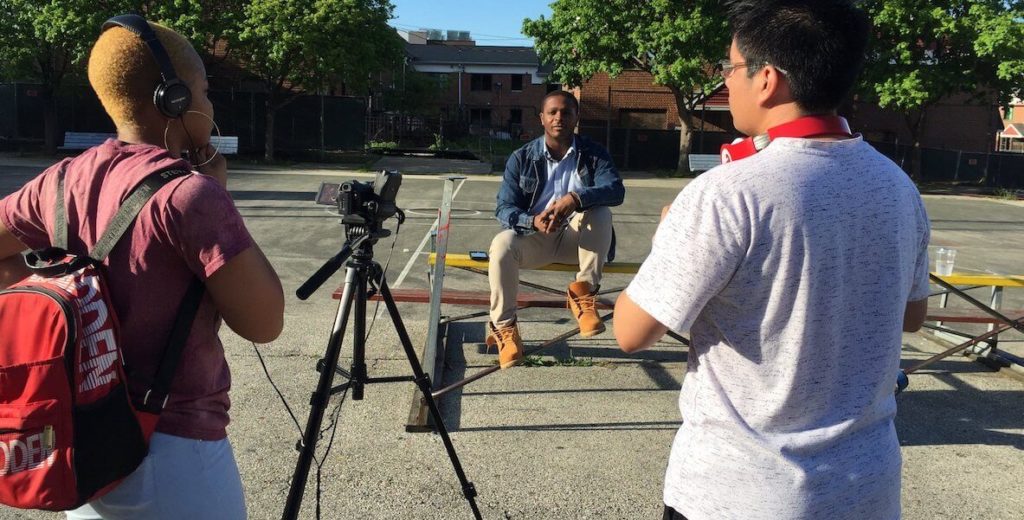
In the summer of 2018, Amina Whittaker, now a junior at Simon Gratz High School, was looking for a job. She thought she’d find something simple—working in an office doing paperwork and organizing files, she says. But then she met a former POPPYN facilitator who told her about the program—which partners with
the Department of Human Services’s WorkReady program in order to pay students during the summer. (During the school year, students can get stipends, internship credit, or fulfill volunteer hours through the program.)
She was hesitant at first—she didn’t have experience using cameras, interviewing sources or editing. But she did have a passion for writing about topics she felt were important and after talking with more young people in the program, she decided to give it a shot.
“Just the vibe of the program was amazing,” she says. The college facilitators made her feel like part of the group right away. “I realized there was a lot that I needed to learn, but they were willing to teach me.”
Whittaker learned to use professional video cameras, develop interview questions, and edit, all while gaining a deeper understanding of real world issues that affected her and her peers.
Being on the research team for POPPYN’s powerful documentary short, Call Out For Change: Breaking the School to Prison Pipeline, released in 2019, was especially impactful for her.
Through interviews with students, school staff and organization leaders, the documentary shows the impact of the school-to-prison pipeline—the disproportionate tendency of minors and young adults from disadvantaged backgrounds to become incarcerated due to harsh school or municipal policies.
(Last month, POPPYN teamed up with the Racial Justice Organizing Committee to host a virtual discussion with students, counselors, parents and policy makers exploring the impacts of the systems working against youth and ideas for change.)
“I realized that a lot of people actually were not aware of [the school-to-prison pipeline], but it has such a big impact on us,” she says. “The more research I did, the more I knew, and the more I wanted to educate other people.”
She learned how the system affects Black and Latinx communities—Black girls are six times more likely than white girls to be suspended, and Black boys are three times more likely than white boys. And she started to realize the impacts of the disciplinary approach she’s seen at various schools she’s attended in Philly.
“Unfortunately, some staff bring in security and hurry to suspend and expel students for foul behavior instead of giving students a safe space to communicate and find the roots of any behavioral issues that they may have,” she wrote to me.
In one scene in the documentary, a student named Mazzi reflects on her experience being put in handcuffs by the school police—when she was in third grade. “After that moment I felt hopeless, like they see me as a bad person, so why try to change, they’re just going to constantly see me as that.”
The doc presents solutions, too, like restorative justice programs, fewer suspensions, and more mental health resources and emotional support. “I think staff should interact with students more, especially students that need help mentally,” Mazzi says later in the documentary. “How can you expect someone to perform if they’re hurting? You wouldn’t send an athlete on the field with a sprained ankle.”
Media that reflects their world
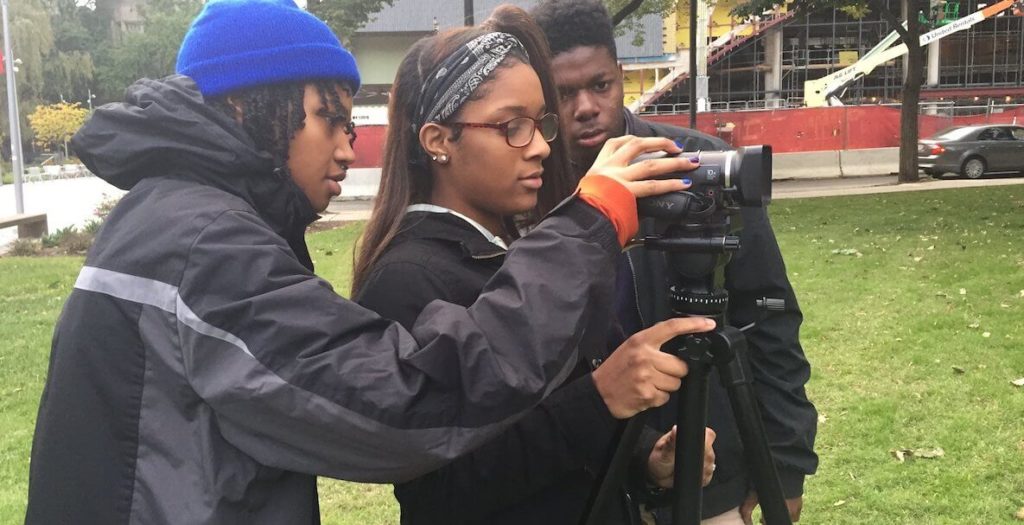
What’s especially powerful about these interviews with students—in this and many other POPPYN videos—is how open young people are with their peers. You can sense the comfort that wouldn’t be there if they were talking to, say, an unfamiliar adult journalist. And that’s part of what makes their content different from mainstream media’s coverage of the same subjects.
![]() Kelsey points out that often the types of stories they cover aren’t reported by mainstream media at all, and when they are, it tends to feel like parachute journalism. “They’ll just come in, and here’s the story and boom—we’re leaving,” she says. “Whereas I feel like we have more of a deeper connection with the communities that we report in. A lot of students, they come from those communities.”
Kelsey points out that often the types of stories they cover aren’t reported by mainstream media at all, and when they are, it tends to feel like parachute journalism. “They’ll just come in, and here’s the story and boom—we’re leaving,” she says. “Whereas I feel like we have more of a deeper connection with the communities that we report in. A lot of students, they come from those communities.”
Kelsey, who’s lived in Germantown, Nicetown and Sharswood, got involved in POPPYN five years ago, when she was a student at Parkway Northwest High School for Peace and Social Justice.
Like many students, she found her way to POPPYN through another program in The Collaborative, VOICES, where she started learning about social justice issues in a more impactful way than what her school was offering. “I was being introduced to words like white supremacy and patriarchy and misogyny and understanding how those things interact directly with my life,” she says.
When she joined POPPYN, she started looking at how those systems affect and are affected by the media. “That sparked this whole new interest in thinking about how systems of oppression can be perpetuated through media,” she says. “How does representation play a role in how I see myself, my community, and people around me. How does that impact equity? How does it impact how our communities are looked at from other communities?”
“In my dream world, I imagine youth media being on mainstream networks,” Kelsey says. “I imagine young people from their local communities having their own segments or specials—being able to share their story and present their perspectives on news.”
A 2017 study on representations of families, by race, in media by Color of Change found that 37 percent of those represented as criminal in news and opinion media are Black family members, though they constitute only 26 percent of family members arrested for criminal activity. Meanwhile, 28 percent of those represented as criminal are white family members, though white family members constitute 77 percent of those arrested for criminal activity.
The same study found that, nationally, Black families represent 59 percent of poor people in news and opinion media coverage, though they make up just 27 percent of all poor Americans, according to official reports. White families, meanwhile, represent 17 percent of the poor in news and opinion media, but make up 66 percent of poor people in America—in part a reflection of the much larger Caucasian population nationally.
(It’s worth noting that poverty rates in Black communities are about twice as high as in white communities—but they are portrayed as poor in the media more than three times as often.)
And it’s mainstream news outlets that are contributing to these statistics. The New York Times ranked second in Color of Change’s calculus (behind Brietbart and ahead of the Wall Street Journal) in exaggeration of Black poverty over white poverty, portraying fewer than one white family as poor for every five Black families.
In part, this is a reflection of who makes up newsrooms. According to 2019 Pew research, just 7 percent of newsroom staff are Black and 10 percent are Hispanic, and 6 percent of news directors are Black. “For far too long, we’ve had one side of the story telling the story,” says Kelsey. “We need newsrooms to start reflecting the people.”
And that includes young people—especially young people of color.
When Kelsey first joined POPPYN as a high school student, “It felt so empowering to think about how we can counter mainstream narratives that don’t really tell the full story of ourselves—of Black youth, specifically, and oftentimes low-income Black youth,” she says.
Now, she’s guiding cohorts of young people in doing just that, and she wants to see youth-led media grow beyond niche audiences.
“In my dream world, I imagine youth media being on mainstream networks,” Kelsey says. “I imagine young people from their local communities having their own segments or specials—being able to share their story and present their perspectives on news.”
From POPPYN to the future
While POPPYN students haven’t been able to work together to film segments since last March, they’ve still been busy producing impactful content.
At a recent POPPYN meeting held via Zoom, the students worked on edits to their digital ‘zine, covering how young people have been affected by the tumultuous and stressful times we’re living in. The ‘zines features art, poetry and links to two virtual events POPPYN held last year—roundtable discussions on remote learning and the election. They held these events to provide space for young people to talk through and process all the changes and share experiences.
![]() “It was cathartic in a way,” says Maryem Bouatlaoui, a junior at Central High School, who facilitated the conversation about remote learning. “We were all just there just talking about what we felt about these topics, and no censor—whatever you feel, you get to say.”
“It was cathartic in a way,” says Maryem Bouatlaoui, a junior at Central High School, who facilitated the conversation about remote learning. “We were all just there just talking about what we felt about these topics, and no censor—whatever you feel, you get to say.”
What drew Bouatlaoui to POPPYN was witnessing the power of the interview. At the first meeting she attended, she watched a POPPYN member being interviewed about being an immigrant in the U.S.
“Some of the questions that were asked I would have thought would have been too personal or too deep to even answer, and the person getting interviewed was just answering them in such depth and detail,” Bouatlaoui says. “What really took me was the emotional responses from the interviewer and the interviewee.”
In non-pandemic times, too, POPPYN provides significant support for students.
“POPPYN discussions helped me connect the dots of the cause and effect of your actions or what you choose to make money. It has made me want to make sure that no matter what I do, I’m helping other people.”
“Everybody at POPPYN has seen my college resume,” says Kiana Moore, now a freshman at Howard University. She joined the program in 2019, the summer before she started her senior year at Central High School. It was also two years after her mom died.
“I was going through a lot,” she says. And she wasn’t getting the support she needed from her school counselors. “It was better for me to talk to people at POPPYN because I could tell that they genuinely care about my well being.”
She stayed on with POPPYN as a college facilitator so she could provide support for students. “I saw the people—the college students—at POPPYN as confidants,” she says. “I want to be that for other people.”
The program also influenced her career goals. Learning to have respectful debates on controversial issues they covered—and realizing she enjoyed them—strengthened her interest in going to law school someday.
But for the near future, she wants to start a natural hair business focused on helping people feel more confident in wearing their natural hair.
“When I went natural in sixth grade, and started wearing my afro out, I received a lot of different comments,” she says. “So I had to really learn to build confidence and wear my natural hair.” She’s launching a Youtube channel to share her experience and hopes to start styling after the pandemic.
“POPPYN discussions helped me connect the dots of the cause and effect of your actions or what you choose to make money,” she says. “It has made me want to make sure that no matter what I do, I’m helping other people.”



